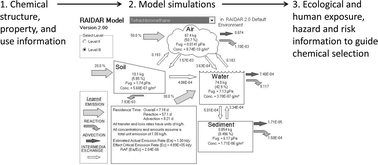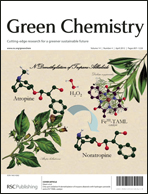The factors that are conventionally considered when selecting or designing more environmentally benign chemicals are described and discussed. A modelling strategy is described by which the environmental behaviour of chemicals can be compared and changes in molecular structure evaluated with the objective of contributing to this process. This is accomplished using a mass balance model for chemical fate, exposure and effects in an evaluative environment that depicts the likely environmental behavior of the substance and includes a mechanistic bioaccumulation and food web component, yielding estimates of both human and ecological exposures to the chemical. These exposures can be compared with levels known to exert toxic effects. The strategy thus provides a holistic characterization of chemical fate, persistence, bioaccumulation, exposure, proximity to levels of toxic concern, potential for long range transport and the effect of quantity of chemical released under steady-state conditions. Substances can be readily compared and the effects of proposed changes in molecular structure and hence properties can be evaluated. A key component is the use of the concepts of chemical fugacity and activity for describing the chemical's environmental distribution and potential to exert toxicity. The concept is applied to organic solvents, including alkanes, aromatics, halogenated aromatics and nitrogen-containing compounds.

You have access to this article
 Please wait while we load your content...
Something went wrong. Try again?
Please wait while we load your content...
Something went wrong. Try again?


 Please wait while we load your content...
Please wait while we load your content...